Now a new startup bubble? All the pros and cons
- Transfer

The author of the text is Bill Maris, president and managing partner at Google Ventures.
I heard people are worried if we were in a bubble in the case of startups. Is it as bad as the dotcom bubble in 2000? Could it be worse than the old? I thought that we should look at all the available data and understand if we can extract anything more from them than just personal opinion. So I asked our specialists at Google Ventures to delve into the question and find out what strict data is telling us. And this text will share with you discovered.
In the late 90s, venture capitalists were very excited about the Internet. A huge amount of money was poured into some companies, which then failed miserably, and many people lost a lot of money.
Fast forward to 2015 again. If you read the headlines for multi-billion dollar evaluations of startups like Uber (one of our portfolio companies), Airbnb, and Dropbox, it's easy to see why some people are worried. Are everyone as irrationally excited about new platforms and economic models as people were in 1999? Or is it different this time? There are arguments for and against.
Why there is no bubble
While the data suggests an increase in investment, they also show four key differences from the dotcom bubble.
1. Companies later go
public. During the bubble of 2000, many companies conducted an initial public offering of shares before they first received any income. Today, the path of companies to IPO is much longer:
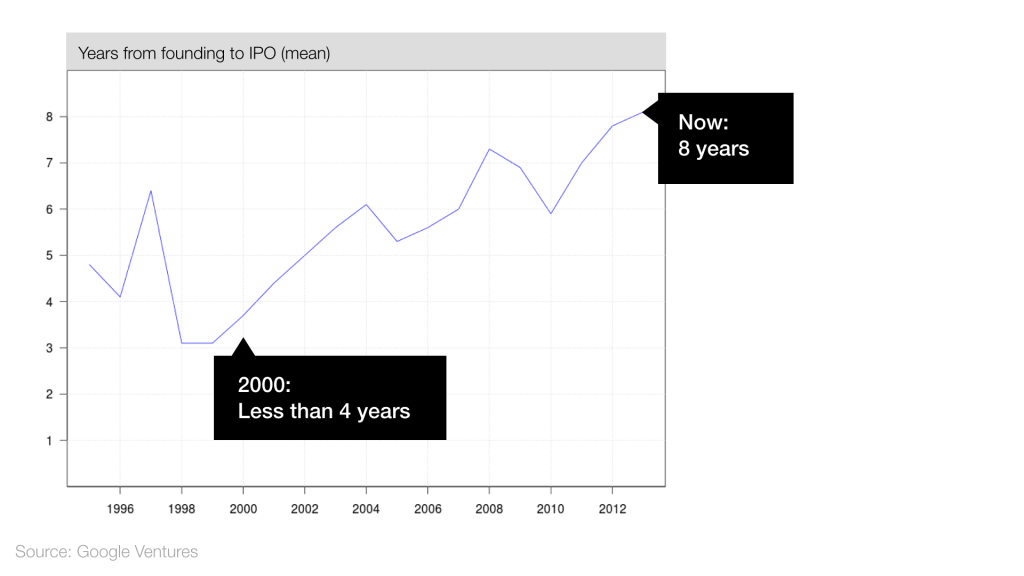
2. Venture collects less money than at the peak in 2000.
In 2000, money poured into the venture stream, and as a result, financing was received even by companies that could not convince investors without it - which led to loud failures. Today, the flow of money to venture capital funds is growing, but still remains much lower than the level of 2000:
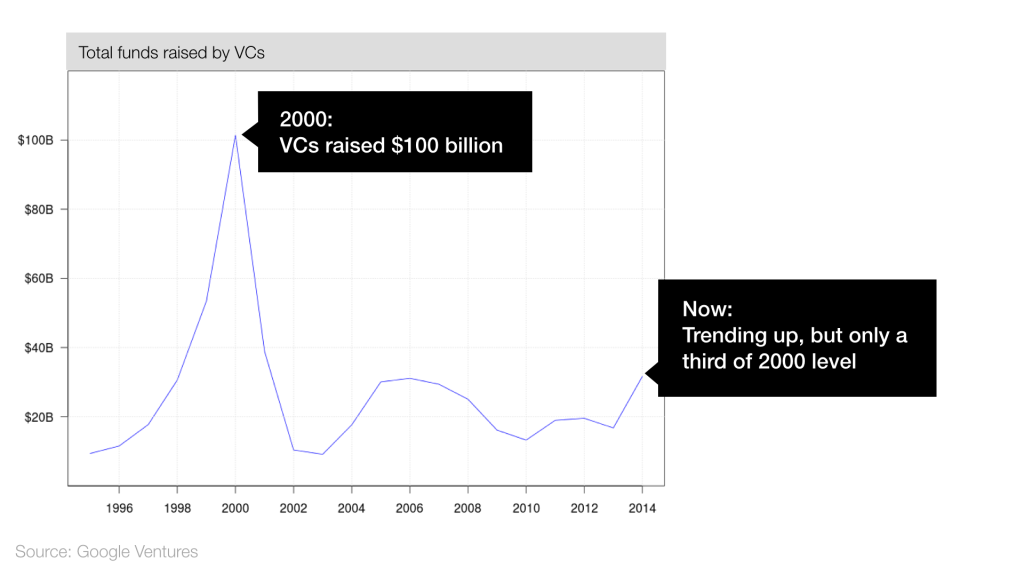
3. The total number of investments remains the same.
In 2000, venture capitalists made a record number of investments: more than 2000 per year. What's up with it now? This may seem unexpected, but the number of transactions has not changed much since 2007. This means that investors are still selective in who gets the money, rather than giving it to everyone.
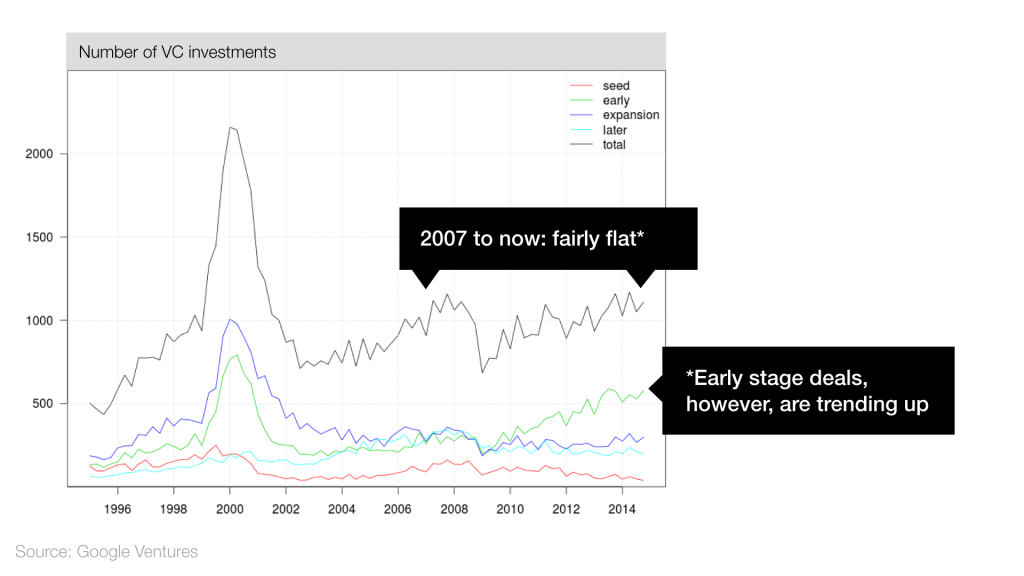
4. Money began to invest more - but still only half the peak of 2000
Venture investment has risen sharply in 2013 and 2014, but still remains well below the dot-com bubble levels:
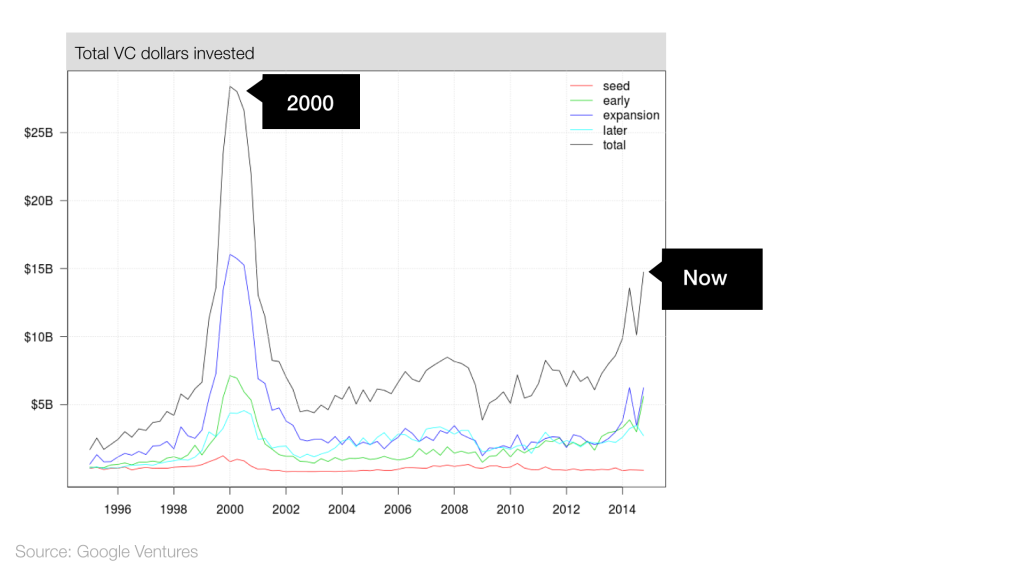
During the bubble in 2000, the increased volume of incoming money led to an increase in the number of investments. Now, the volume of investments is growing, while their number remains the same. What's happening? Investors are focusing their money on a relatively small number of large transactions.
Why there is a bubble
Our data analysis was not optimistic in everything. Here are six warning signs that indicate we can be in a new bubble.
1. Investors invest more in late rounds.
Considering that increased investments at a later stage replaced IPOs, this in itself does not mean a problem. However, the similarities with 2000 are obvious:
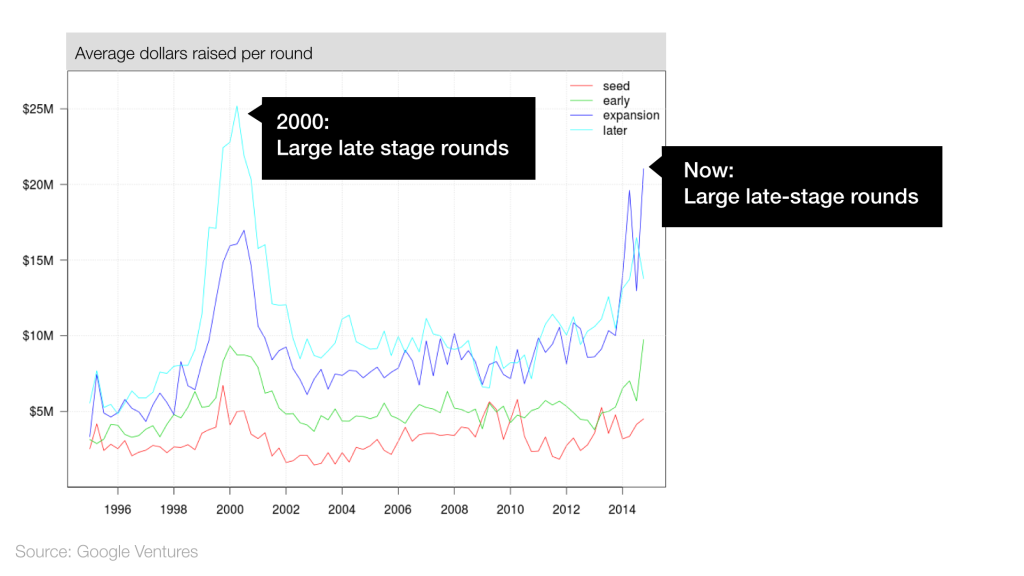
2. The ratings of companies in the private market are increasing.
Up to this point, our data showed a more favorable environment than the 2000th. However, the story is completely different with ratings:
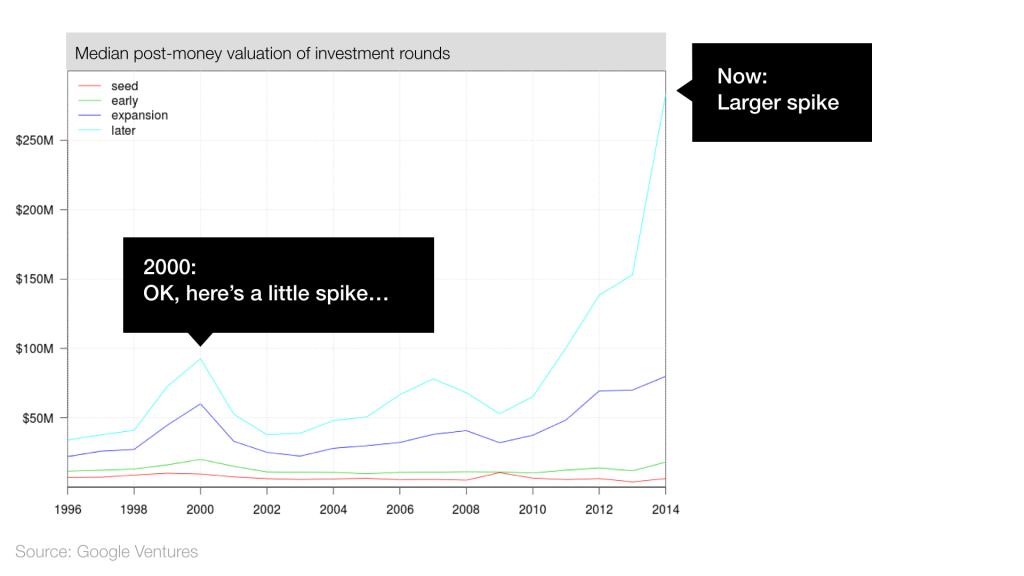
3. Ratings increase faster than venture funds raise money.
Here is another reason to worry:
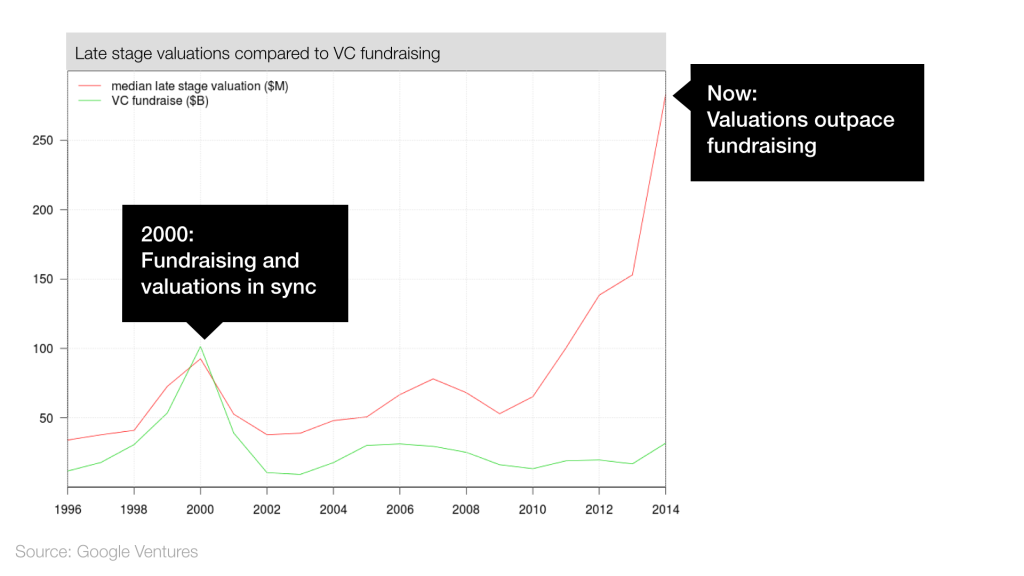
4. Raised ratings when going to IPOs.
Grades when going to IPOs increased in general, and among the most successful companies - especially strongly ( well, or maybe they just began to wait longer to enter the stock exchange).
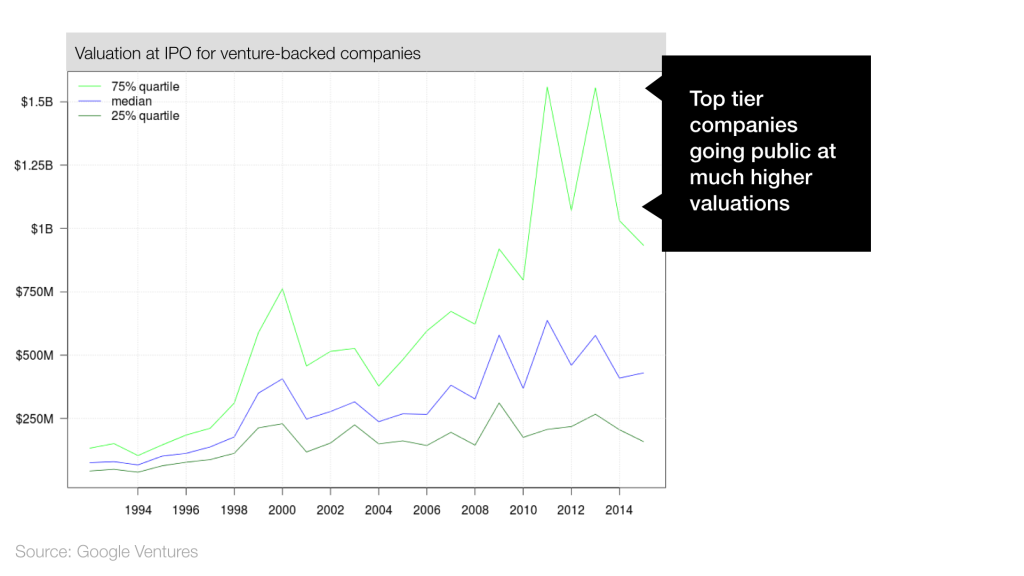
5. Late financing replaces exit.
Both late financing and the purchase price of the company rise. And IPO ratings over the past year, on the contrary, have fallen. As a result, the first two things, in fact, replace the third.
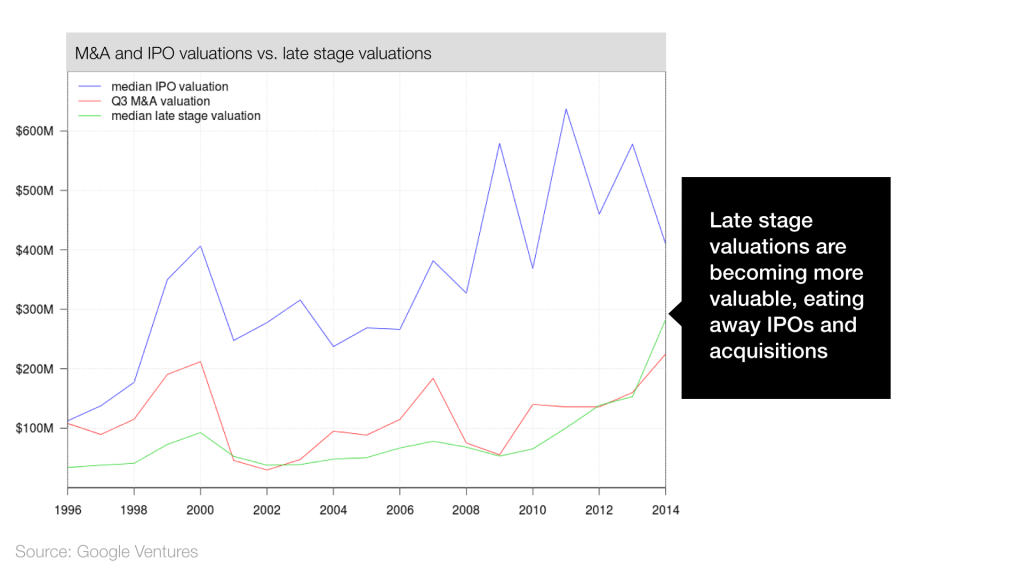
6. The ratio of the valuation of the company on the IPO to the valuation of the late investment
These data tell us that although IPO scores have increased over the past few years, they do not keep pace with valuations for late investments. Moreover, this process has been going on since 2009. This suggests that investors who invest in the later stages will receive less from their investments than before.

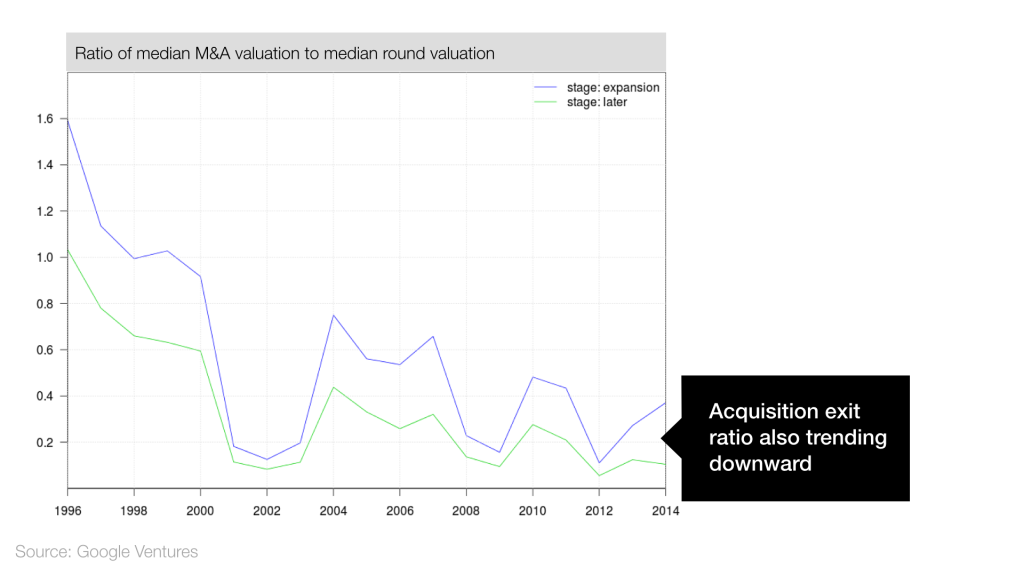
Looking at these data, we can confidently say only one thing: 2015 is very different from 2000. At the same time, some differences are calming, and some are disturbing.
The data clearly show increased funding in the later stages, but this can be interpreted in different ways. One assumption is that generous such financing makes companies stay in private hands longer. Another is that technological growth has allowed companies to grow faster, and later funding has also increased to meet the needs of these new (but already large) startups.
What is the result? If there is a bubble, then it is a completely different bubble. And this is logical, because the market and technology have changed dramatically over the past 15 years.
Of course, companies will continue to go bankrupt, and with today's high ratings and the attendant attention, these failures will look even bigger and more powerful. But this does not mean that everything will collapse soon. When one of these super-companies goes broke (and this is inevitable), we take a deep breath and ask ourselves if this means a trend, or only part of the normal ratio of failures and successes. Perhaps we should look at the data before panicking.
